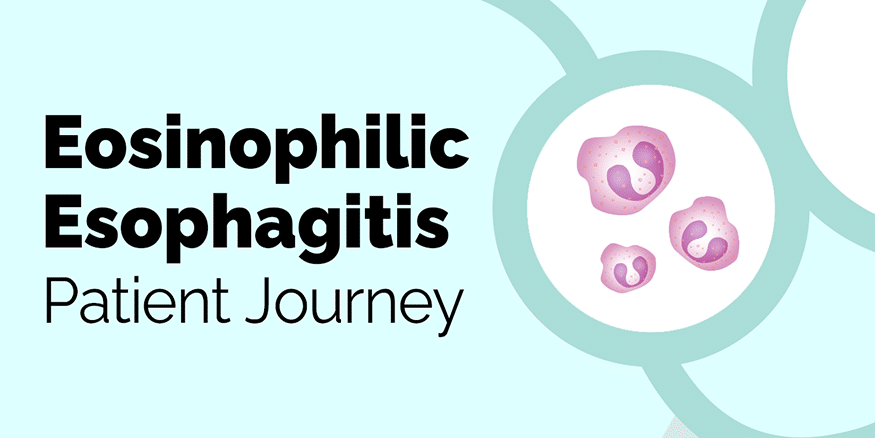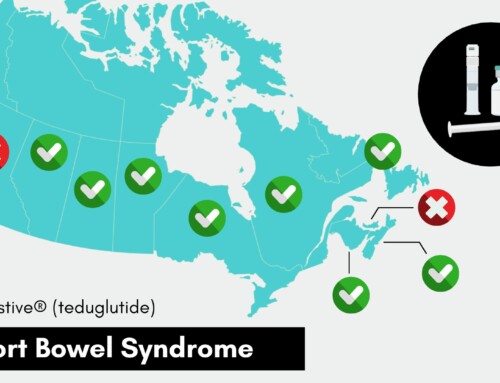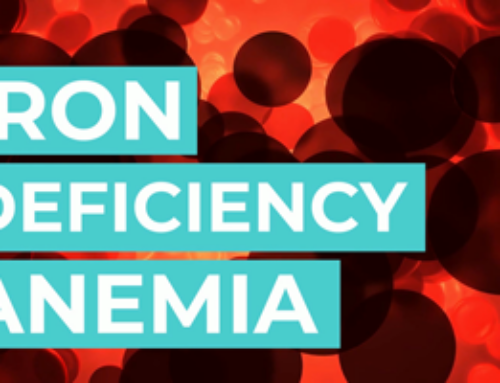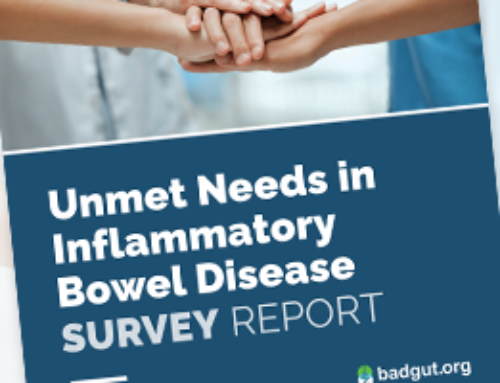
EoE Patient Journey Video
Video Transcript
Video Transcript
If you have recently found out that you or your child has eosinophilic esophagitis, you might be relieved to finally have a diagnosis, but anxious about what the future holds. Each individual has a unique journey, one that, unfortunately, isn’t always easy. However, with the right treatment, it is possible to live a healthy life.
Eosinophilic esophagitis, or EoE for short, occurs when there are too many eosinophils, a type of white blood cell, in the esophagus. This leads to inflammation in the esophagus, affecting how it functions and causing painful and difficult symptoms.
It can affect people of all ages, but often begins in childhood, even in babies and toddlers, and is more common in boys, as well as in those who have asthma, eczema, seasonal allergies, or a family history of EoE.
Symptoms include difficulty swallowing or pain when swallowing, along with general pain in the chest area, the feeling that food is stuck in the throat, heartburn or acid reflux, refusing food, bloating, regurgitation, vomiting, feeling full after not eating much, and general lethargy or fatigue. Adults might seek help because food gets stuck in their throat, which is called food impaction. Children might suffer for some time until the symptoms are consistent enough for a parent to detect a pattern or for a physician to identify the condition during routine care.
Once it is clear that symptoms are persistent, the next step is visiting a physician, who will review your or your child’s medical history and symptoms, perform a physical examination, and then begin ordering tests. Since EoE is rare, but many of its symptoms overlap with other disorders, physicians will investigate the possibility of more common conditions before considering EoE. They might order blood tests or refer you to a gastroenterologist to investigate further, by using a small camera attached to a flexible tube in a procedure called endoscopy, to view the inside of the esophagus and take samples for biopsy. High numbers of eosinophils in the sample indicate EoE. Your doctor might also refer you to an allergist for further testing, which might include sponge or string tests.
Once you have a diagnosis, your physician will help you find a treatment plan to decrease symptoms and reduce the number of eosinophils in the esophagus.
Because of the strong connection between EoE and allergies, it is usually necessary to modify the diet and stop eating the most common food allergens. The 2-4-6 elimination diet involves avoiding certain food allergens for eight weeks, then having a biopsy to check eosinophil levels. First, you remove the two most common allergens: cow’s milk and wheat. If that isn’t adequate, you also remove egg and soy, to exclude the four most common. If biopsies are still not showing improvement, you remove peanuts and tree nuts as well as fish and shellfish, so that you are avoiding all six of the most common allergens. A few patients might need to follow an elemental diet, which involves getting nourishment from a specialized formula. In severe cases, a temporary feeding tube might even be necessary. Many find it helpful to work with a registered dietitian to develop a diet plan that works with an individual’s limitations, requirements, and preferences.
Dietary changes might be enough to reduce eosinophils and symptoms in certain patients, but others will need to include medication. Some medications treat the symptoms and others treat the underlying inflammation. For adults who develop EoE, the first line of treatment often involves taking a proton pump inhibitor, rather than going on an elimination diet. For those with strictures, endoscopic dilation can stretch the tightened area out and make swallowing easier. Ongoing clinical trials offer hope for other potential treatments in the future.
You might feel like you are trapped in an infinite loop of testing, trying new treatments, returning for more tests, and so on. This can be especially difficult if you are also coping with painful symptoms, difficulty eating, feelings of embarrassment, inability to attend school or work, and the social isolation that these factors can lead to. It is important to lean on available resources to manage any emotional effects of the diagnosis. The GI Society has resources for those who want to learn more about EoE. You might need to make special accommodations with school or work, which can help lessen the burden of managing a chronic disease.
As you settle into a treatment routine, you will still need ongoing care from your healthcare team, which might consist of a family doctor, a gastroenterologist, an allergist, a registered dietitian, radiology specialists, and mental health professionals.
EoE that isn’t well treated has many potential complications. Infants might have trouble breastfeeding or can react poorly to formula feedings. This could lead to a failure to thrive in these populations. Malnutrition and anemia can occur in all age groups, and there is a risk of serious conditions in the esophagus, such as food bolus obstruction, strictures, perforation, or candidiasis. Those living with EoE are also more likely to develop certain other conditions, including asthma, atopic dermatitis, and food allergies. Maintaining regular doctor visits can help you prevent these complications and comorbidities.
While eosinophilic esophagitis is a chronic condition, with the right support, you or your child can get to a place where you are healthy and thriving.






